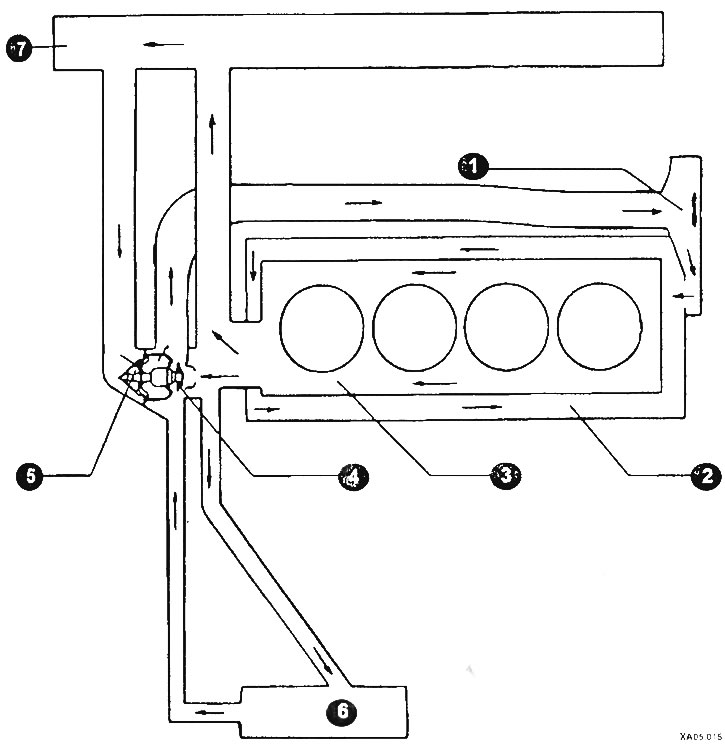Cooling System Diagram

1 - coolant pump; 2 - pipeline; 3 - cylinder block; 4 - thermostat; 5 - thermostat housing; 6 - heater radiator; 7 - radiator.
All vehicles are equipped with a cooling system with coolant circulation under thermostatic control. A water pump mounted on the front of the engine pumps coolant through the engine. Coolant flows around each cylinder towards the rear of the engine. Molded coolant passages direct coolant around the intake and exhaust ports, behind the spark plugs, and in close proximity to the exhaust valve guides.
The thermostat is located at the rear of the engine. During heating, a closed thermostat prevents fluid from passing through the radiator. As the engine reaches normal operating temperature, the thermostat opens and allows hot coolant to enter the radiator where it cools before returning to the engine.
In the cooling system at operating temperature there is an excess pressure of 1.2-1.5 bar, which significantly increases the boiling point of the coolant above 100°C. This provides a certain reserve. The engine can be heated to temperatures above 100°C without the risk of liquid boiling in the cooling system. To maintain the correct pressure in the system, the radiator is equipped with a cap with a safety valve (1.2-1.5 bar) and vacuum valve (0.03-0.13 bar). The vacuum valve lets in air when the coolant decreases in the obkom during cooling.
